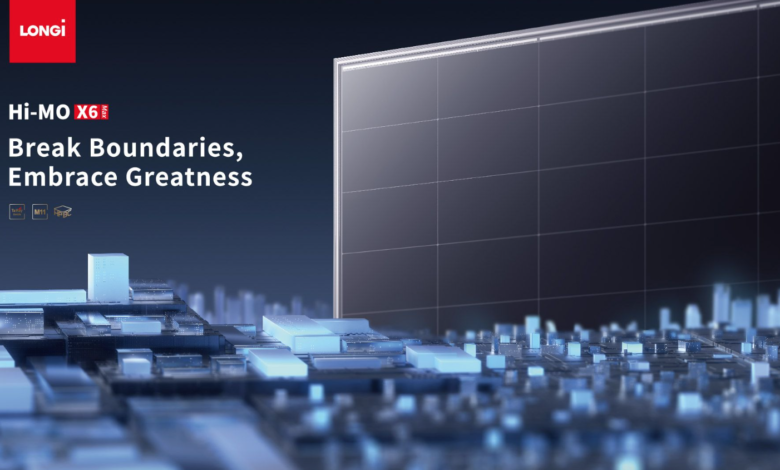LONGi launches Hi-MO X6 Max modules, standard wafer sizes

Hi-MO X6 Max, the solar panels with the new standard dimensions
“Designed specifically to meet the evolving needs of distributed photovoltaic customers”. With these words, the Chinese manufacturer LONGi presents its new series of Hi-MO X6 Max photovoltaic modules, large panels that entered mass production last quarter at the Jiaxing plant. The operation represents an important step for the company. This series uses 72-cell rectangular silicon wafers for the first time according to the new standards agreed upon in the summer of 2023 by the six large solar producers (including LONGi).
Large-format photovoltaic modules represent for many the future of the solar market, but the segment still faces a major problem: the lack of standardized size of the wafers and the chassis. A gap that obviously affects especially the downstream part of the supply chain and that according to the Chinese Solar Industry Association can increase costs throughout the supply chain, influencing raw materials, production and plant design.
That’s why in July 2023 some big manufacturers – which alone cover 80% of the solar market – have returned to the issue to find a new shared vision. Reaching consensus on the dimensions of modules with rectangular wafers: 2,382 mm x 1,134 mm. And a month later they agreed on the wafer size standards: 182.2×191.6 mm.
The new series of photovoltaic modules with standard rectangle wafers
The new series of fv modules corresponds exactly to the new requirements. Hi-MO X6 Max is based on the Hi-MO X6 line and is equipped with the cell technologies “TaiRay Inside” and HPBC longitude. According to Lv Yuan, head of the company’s Product and Solution Center, the standardized dimensions of Hi-MO X6 Max maximize customer benefits and reduce material design costs.
Taking as an example the 72-cell version – read in the statement “the new product can reduce transportation costs by 0.61 dollars/kW compared to the conventional Hi-MO X6 module […] Thanks to the improved power, the BOS cost on the system installation side is also reduced by 3.57% (about 4,16 dollars/kW) compared to the equivalent traditional power level (585 W versus 615 W)”.





